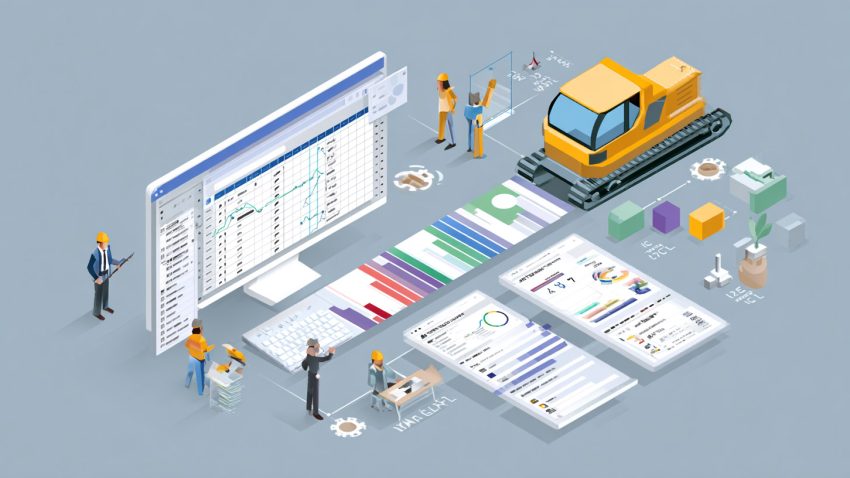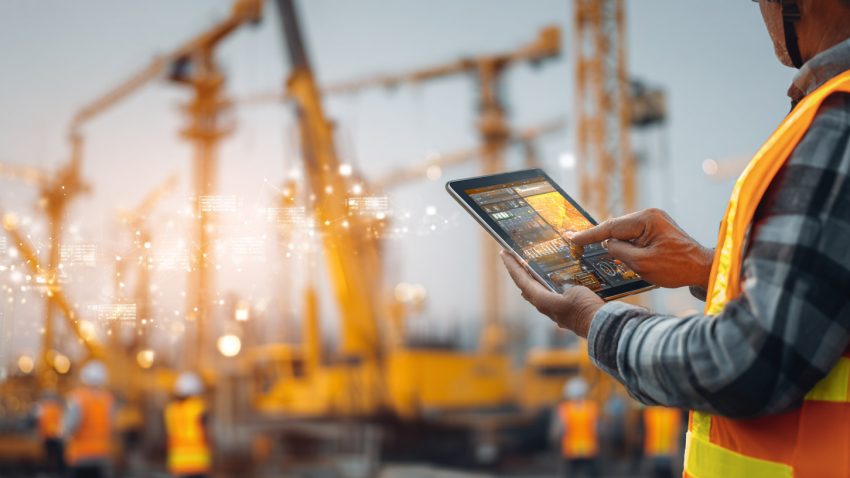Floating Solar Power: Harnessing Water for the Future of Renewable Energy
Table of Contents:
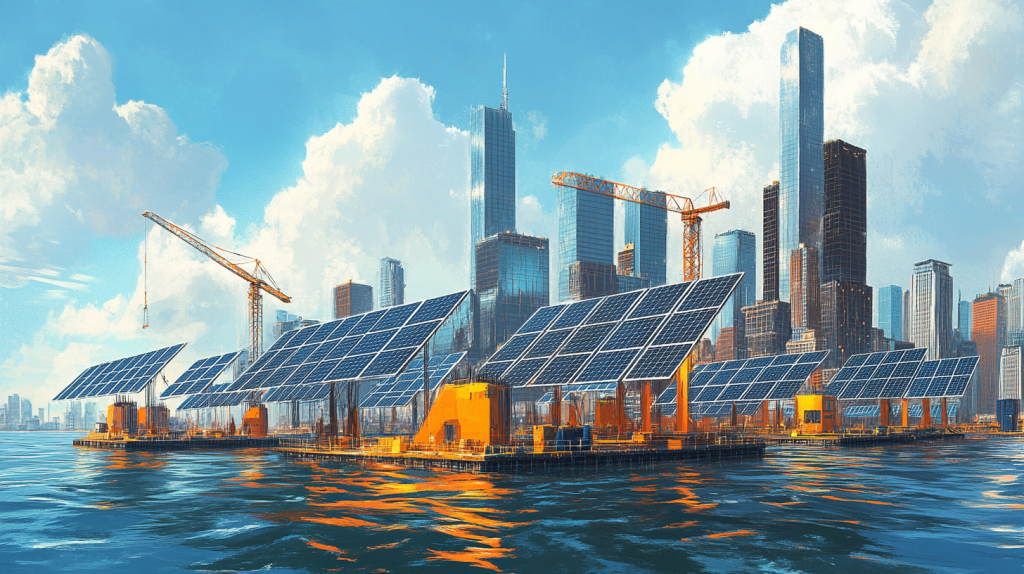
As the global push for clean energy solutions accelerates, floating solar power is emerging as a game-changer in renewable energy production. Unlike traditional solar farms that require large land areas, floating solar farms—also known as Floating Photovoltaics (FPV)—are installed on water bodies such as lakes, reservoirs, and offshore coastal regions. This innovation not only maximizes space efficiency but also improves solar panel performance by leveraging water’s natural cooling effect.
But how viable is floating solar power, and what are the technical, environmental, and economic considerations that will shape its future? This guide explores the growth of floating solar technology, its advantages over land-based solar systems, and the challenges that must be addressed for large-scale adoption.
What Is Floating Solar Power and How Does It Work?
Floating solar power, also known as Floating Photovoltaics (FPV), refers to solar energy systems installed on water surfaces rather than land. These floating solar farms use buoyant platforms to support solar panels, which are then anchored securely to prevent movement due to waves or currents.
How Floating Solar Power Works
- Floating Platforms – Solar panels are mounted on waterproof, corrosion-resistant floating structures.
- Anchoring Systems – Floating farms are anchored to the reservoir or seabed to ensure stability.
- Energy Transmission & Grid Integration – The generated electricity is transmitted via underwater cables or hybrid storage solutions.
Key Advantages of Floating Solar Power Over Land-Based Systems
✅ No Land Constraints – Maximizes energy production without competing for farmland or urban space.
✅ Higher Efficiency – Water’s cooling effect improves solar panel performance by up to 10%.
✅ Reduces Water Evaporation – Floating panels help conserve water in reservoirs, benefiting agriculture and hydropower plants.
Floating solar power is redefining how renewable energy is produced, offering a scalable, efficient, and environmentally friendly alternative to traditional solar farms.

The Global Growth of Floating Solar Power
As solar energy adoption continues to rise, more countries are investing in floating solar projects to expand renewable energy capacity while minimizing land use conflicts.
Floating Solar Growth Trends Around the World
- Asia Leading the Expansion
- China, Japan, and India have launched some of the largest floating solar farms, taking advantage of their large reservoirs and hydroelectric dams.
- China’s Three Gorges Reservoir Floating Solar Project generates over 850 MW of clean energy, making it the world’s largest floating solar installation.
- Europe and the U.S. Entering the Market
- The Netherlands is developing floating solar farms across artificial lakes to maximize energy production in land-scarce regions.
- The U.S. is piloting FPV on hydroelectric reservoirs and former mining sites, reducing land footprint concerns.
- Offshore Floating Solar: The Next Step?
- New developments in offshore floating solar technology aim to co-locate FPV with offshore wind farms, creating hybrid renewable energy hubs.
Floating solar power is rapidly becoming a mainstream renewable energy solution, with governments and industries investing in large-scale FPV projects to boost energy security and reduce carbon footprints.
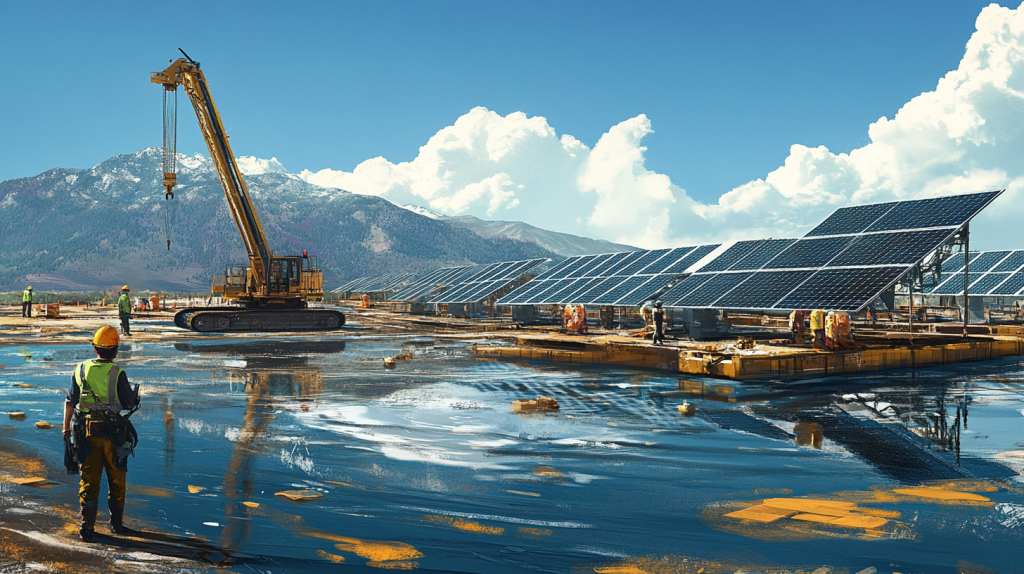
Engineering and Environmental Considerations for Floating Solar Projects
While floating solar offers significant benefits, deploying large-scale FPV systems comes with engineering and environmental challenges that must be addressed.
Technical Challenges in Floating Solar Development
- Anchoring and Stability Issues
- Floating solar systems must withstand wave motion, wind speeds, and fluctuating water levels.
- Advanced mooring and anchoring technologies are needed to ensure long-term structural stability.
- Electrical Safety and Waterproofing
- Operating high-voltage electrical systems on water requires specialized waterproof components and corrosion-resistant materials.
- Strict electrical safety protocols must be in place to prevent short circuits and equipment failure.
Environmental Concerns and Mitigation Strategies
- Impact on Aquatic Ecosystems
- Large-scale floating solar farms can affect water temperature, oxygen levels, and aquatic biodiversity.
- Smart designs with elevated panel spacing help reduce ecological impact and allow light penetration for aquatic life.
- Sustainable Material Selection
- Using recyclable, low-impact materials reduces environmental concerns related to plastic-based floating platforms.
By addressing engineering and environmental challenges, floating solar can scale globally without compromising water ecosystems or structural integrity.
4. The Role of AI and Automation in Floating Solar Construction
As floating solar power expands globally, the integration of artificial intelligence (AI) and automation is becoming essential for streamlining construction, improving energy efficiency, and reducing operational costs. Unlike traditional land-based solar farms, floating solar installations require specialized engineering, logistics, and maintenance strategies, which can be enhanced through AI-driven automation.
How AI and Automation Are Transforming Floating Solar Construction
1. AI-Powered Site Selection and Design Optimization
- AI algorithms analyze environmental factors, such as water depth, wind speeds, and sunlight exposure, to determine the best locations for floating solar installations.
- Predictive modeling tools help engineers design resilient floating structures that can withstand waves, water level fluctuations, and extreme weather conditions.
2. Automated Construction and Robotic Installation
- Floating solar projects require precise panel alignment on water, which is time-consuming and labor-intensive.
- Robotics and automation enable faster, more precise panel installation, reducing labor costs and construction time.
- AI-powered drones assist with surveying and layout planning, ensuring accurate placement of floating solar platforms and anchoring systems.
3. AI-Driven Maintenance and Predictive Monitoring
- AI-based sensors continuously monitor floating solar farms for efficiency losses, equipment malfunctions, and structural wear.
- Predictive maintenance algorithms detect early signs of corrosion, misalignment, or electrical failures, preventing costly downtime.
- Automated cleaning robots remove dirt and algae buildup on panels, maintaining optimal energy output.
Best Practices for AI and Automation in Floating Solar
✅ Use AI for data-driven site selection and energy optimization.
✅ Adopt robotic-assisted panel installation to reduce labor costs.
✅ Implement predictive maintenance systems to enhance long-term efficiency.
The future of floating solar energy depends on AI and automation to increase installation speed, improve efficiency, and reduce maintenance costs, making floating photovoltaics a more viable solution for large-scale renewable energy production.
Related Articles:
Floating Solar Farms: How Offshore Photovoltaics Are Powering the Future of Clean Energy
The Best Guide to Delivery Management Systems (DMS) for Commercial Construction

Floating Solar and Energy Storage: Solving Intermittency Challenges
One of the biggest challenges in floating solar energy production is intermittency, meaning solar power is only generated during daylight hours. Without effective energy storage solutions, floating solar farms face grid instability issues and potential energy wastage.
Key Energy Storage Challenges for Floating Solar
- Limited Land for Battery Installations
- Floating solar farms often lack onshore space for traditional battery storage systems.
- Developing floating battery storage solutions is crucial for offshore or large-scale floating solar farms.
- Energy Fluctuations Due to Water Movement
- Unlike fixed land-based solar panels, floating panels shift with waves, causing small inconsistencies in energy output.
- AI-driven grid stabilization tools help balance fluctuations and maintain energy reliability.
- Grid Integration and Transmission Efficiency
- Offshore floating solar farms require advanced power transmission solutions, such as underwater cables or hybrid storage systems.
- Smart grid technology and AI-based energy forecasting can improve grid stability and reduce power losses.
Emerging Energy Storage Solutions for Floating Solar
1. Floating Battery Storage Systems
- New developments in floating energy storage allow batteries to be installed on floating platforms, eliminating land constraints.
- Saltwater batteries and flow batteries are emerging as viable alternatives to lithium-ion storage, offering longer lifespans and environmental benefits.
2. Hybrid Floating Solar + Hydropower Integration
- Floating solar panels are increasingly being co-located with hydroelectric dams, providing a natural energy storage solution.
- Excess solar energy can be used for pumped hydro storage, where water is stored at higher elevations and released for power generation when needed.
3. Green Hydrogen Production
- Floating solar energy is being tested as a power source for green hydrogen production, which can store solar energy in chemical form for later use.
Best Practices for Energy Storage in Floating Solar Projects
✅ Integrate floating solar with hydroelectric power plants to enhance storage capacity.
✅ Adopt next-generation batteries that offer greater efficiency and longevity.
✅ Utilize AI-driven energy forecasting tools for grid stability and demand response management.
Solving the intermittency challenge is key to making floating solar energy a reliable, large-scale renewable power source. Energy storage advancements, combined with AI-based energy management, will drive the future of floating solar expansion.

How Smart Construction Software like StruxHub Enhances Floating Solar Project Management
Deploying floating solar farms requires highly coordinated construction management, given the unique logistical and regulatory challenges involved. From tracking material shipments to scheduling installation crews, smart construction software plays a vital role in ensuring floating solar projects are completed on time, within budget, and in full compliance with environmental regulations.
Key Challenges in Floating Solar Construction
- Coordinating Offshore Deliveries and Supply Chains
- Floating solar farms require specialized equipment, waterproof electrical systems, and modular floating platforms, all of which must be shipped to remote locations.
- Without proper tracking, delays in solar panel shipments, anchoring systems, or electrical components can stall construction.
- Managing Installation Crews and Workforce Logistics
- Installing solar panels on floating platforms requires specialized labor teams, including marine engineers, electricians, and solar panel technicians.
- Poor scheduling leads to wasted labor hours and increased costs.
- Ensuring Regulatory Compliance and Safety Protocols
- Floating solar projects must comply with water use regulations, electrical safety codes, and environmental impact laws.
- Failure to track permit approvals and safety requirements can delay projects or lead to legal fines.
How Smart Construction Software Solves These Challenges
1. Real-Time Delivery and Supply Chain Tracking
- Smart construction platforms like StruxHub provide real-time logistics tracking, ensuring that all components arrive on-site according to the project schedule.
- Automated alerts notify teams of delays, allowing for quick adjustments to prevent downtime.
2. AI-Powered Workforce Scheduling and Coordination
- StruxHub automates crew scheduling, ensuring that labor teams are deployed only when materials are ready for installation.
- Dynamic scheduling prevents understaffing or delays caused by scheduling conflicts.
3. Compliance and Permitting Management
- Construction software ensures all regulatory documents, environmental approvals, and safety inspections are digitally tracked.
- Automated compliance tracking prevents permit expiration and reduces project risk.
Best Practices for Using Construction Software in Floating Solar Projects
✅ Use AI-driven scheduling tools to optimize labor deployment.
✅ Implement real-time logistics tracking to prevent material delays.
✅ Digitally store compliance documents and automate regulatory reporting.
Floating solar projects require precise project management and seamless coordination to overcome logistical, workforce, and regulatory challenges. Smart construction software like StruxHub helps project managers track deliveries, optimize workforce scheduling, and ensure regulatory compliance, making floating solar deployment more efficient and cost-effective.
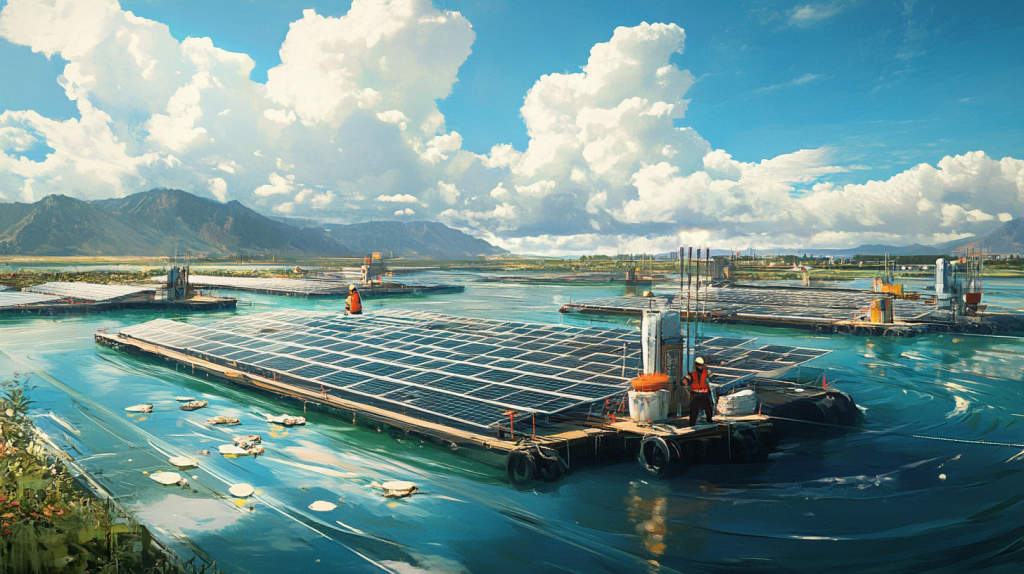
Economic Feasibility: Cost Comparison Between Floating and Land-Based Solar
While floating solar power offers numerous benefits, one of the biggest considerations for project developers is economic feasibility. Is it more cost-effective than traditional land-based solar farms? The answer depends on installation costs, maintenance, energy efficiency, and long-term return on investment (ROI).
Comparing the Costs of Floating vs. Land-Based Solar Farms
| Cost Factor | Floating Solar Farms | Land-Based Solar Farms |
| Installation Costs | Higher due to floating structures, anchoring, and waterproofing. | Lower, as panels are mounted on simple ground-based structures. |
| Land Use Costs | No land acquisition required, reducing costs in urban or high-value areas. | Requires large land areas, leading to high lease or purchase costs. |
| Energy Efficiency | 5-10% more efficient due to the water cooling effect. | Efficiency drops in high-heat environments due to panel overheating. |
| Maintenance Costs | Potentially higher due to water exposure, corrosion, and complex accessibility. | Easier access for maintenance, but subject to land erosion risks. |
| Environmental Benefits | Reduces water evaporation, prevents algae growth, and preserves land for agriculture. | Can lead to deforestation or displacement of agricultural land. |
When Floating Solar is More Cost-Effective
✅ Regions with high land costs where available land is scarce or expensive.
✅ Hydroelectric reservoirs where solar and hydro energy can be co-located for grid balancing.
✅ Hot climates where panel efficiency is negatively affected by overheating on land.
While floating solar farms have higher upfront costs, their long-term efficiency gains, land conservation benefits, and potential integration with hydropower make them a financially viable option for renewable energy expansion.

StruxHub: Revolutionizing Project Management in Large Commercial Construction
Policy and Regulatory Frameworks Supporting Floating Solar Expansion
Governments and regulatory bodies worldwide are developing new policies to support floating solar adoption, ensuring that projects meet environmental, safety, and energy integration standards.
Key Policy Areas Impacting Floating Solar Projects
- Water Use Rights and Permitting
- Floating solar farms require legal permissions to use reservoirs, lakes, or offshore areas.
- Some governments provide fast-tracked approvals for floating solar to boost clean energy capacity.
- Grid Connection and Energy Distribution Regulations
- Grid operators must ensure that floating solar energy can be efficiently integrated without overloading the system.
- Countries like Japan and India are implementing floating solar grid expansion policies to encourage large-scale adoption.
- Environmental Impact Assessments (EIA)
- Floating solar projects must comply with environmental protection regulations to prevent damage to aquatic ecosystems.
- Developers must conduct biodiversity impact studies and implement mitigation strategies for local wildlife.
Countries Leading the Way in Floating Solar Policy
China – Home to the world’s largest floating solar farms, backed by state-funded renewable energy initiatives.
Netherlands – Implementing floating solar incentives to integrate FPV with existing water infrastructure.
United States – Floating solar gaining traction on hydroelectric reservoirs, supported by federal and state-level renewable energy grants.
Regulatory frameworks are evolving to support floating solar expansion, ensuring that projects are environmentally responsible, efficiently connected to the grid, and financially viable.
Related Articles:

The Future of Floating Solar: Large-Scale Offshore Projects and Hybrid Energy Systems
Floating solar is no longer limited to reservoirs and inland water bodies—the next frontier is offshore solar, where large-scale installations could coexist with offshore wind farms to create hybrid renewable energy hubs.
The Next Big Trends in Floating Solar Power
1. Offshore Floating Solar with Wind Power Integration
- Hybrid offshore wind + floating solar farms are being explored in Europe and Asia, maximizing energy production in marine environments.
- Floating solar panels can harness daylight energy, while offshore wind farms generate power at night, creating a balanced renewable energy supply.
2. Floating Solar for Island and Coastal Energy Solutions
- Many island nations and coastal cities rely on diesel power, making floating solar a clean alternative.
- Countries like Singapore, Indonesia, and the Maldives are pioneering floating solar projects to reduce dependency on fossil fuels.
3. Wave-Resistant Floating Solar Platforms
- Engineers are developing next-generation floating platforms that can withstand ocean waves, storms, and high winds.
- Advancements in anchoring technology and marine-grade solar panels will make offshore floating solar more viable for large-scale deployments.
Best Practices for Large-Scale Floating Solar Expansion
✅ Pair floating solar with offshore wind for a more stable renewable energy mix.
✅ Develop floating solar solutions for island nations and coastal cities.
✅ Invest in wave-resistant solar platforms to expand offshore energy capacity.
The future of floating solar lies in offshore expansion and hybrid energy systems, making it a key component of the global clean energy transition. As technology advances, floating solar farms will become more resilient, scalable, and economically viable, contributing to a sustainable energy future.

StruxHub
Experience the power of StruxHub today and witness firsthand how it can revolutionize your construction operations.
Unlock the Full Potential of Your Construction Projects with StruxHub
StruxHub enhances efficiency and coordination across all project phases, providing a single source of truth that eliminates silos and fosters collaboration. Real-time updates, financial management tools, and seamless commvunication features ensure that all team members and stakeholders are aligned and informed, reducing the risk of errors and delays. With comprehensive solutions for document management, risk mitigation, and quality control, StruxHub maintains project integrity and safety, while mobile access and integration capabilities further enhance project flexibility and efficiency.
StruxHub’s Key Features and Benefits:
- Advanced Delivery Management: Automate and optimize your delivery schedules, ensuring materials arrive just in time, every time.
- Site Communication: Utilize georeferenced maps and instant messaging to keep every team member informed and aligned.
- Construction Materials Management: Track inventory levels and manage materials procurement with ease, reducing waste and avoiding project delays.
- Construction Safety & Inspection Workflows: Implement customizable mobile forms for conducting safety inspections and managing compliance documentation effortlessly.
- Short-Term Scheduling: Visualize project tasks with detailed floor plans, linking each activity to specific locations for better planning accuracy.
- Construction Resource Management: Efficiently allocate personnel and equipment, maximizing productivity and reducing idle time.
StruxHub’s Product Offering:
- StruxHub Deliveries: Simplifies the coordination of incoming deliveries, ensuring materials and equipment are precisely timed to project needs.
- StruxHub Logistics: Offers intelligent site logistics planning, from crane scheduling to space allocation, for smoother operations.
- StruxHub Safety: Elevates on-site safety standards with easy-to-use tools for inspections, permits, and incident reporting.
- StruxHub Scheduling: Enhances project timelines with intuitive scheduling tools that ensure tasks are completed efficiently and on time.
With StruxHub, construction companies can look forward to a streamlined, more efficient project execution that delivers on time and within budget. Embrace the power of innovation and take your construction projects to the next level.
Don’t miss out on the opportunity to optimize your construction management processes with StruxHub. Sign up for a free demo today. Let’s build smarter, together.


